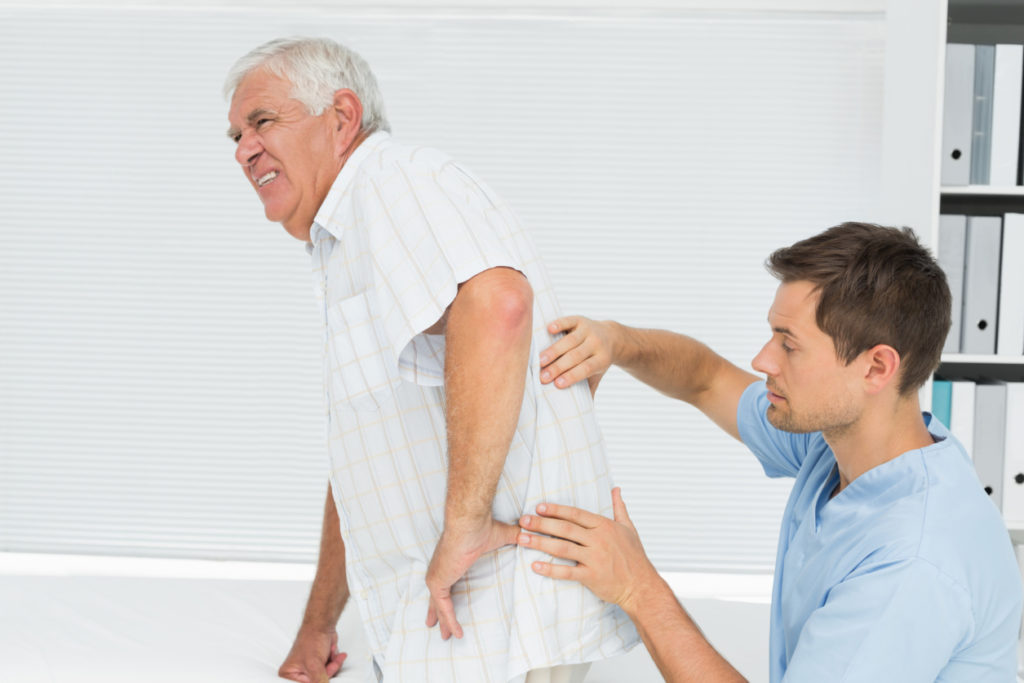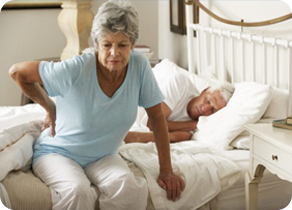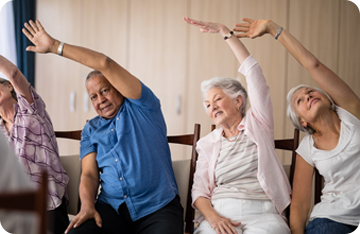Osteoarthritis, which is also sometimes referred to as a degenerative joint disease, is a painful condition that affects many seniors and limits their quality of life. It can cause depression and encourage a sedentary lifestyle. In this article, you’ll learn about the symptoms, causes and what you can do to prevent osteoarthritis if you do not have it as well as how to manage it if you do.
How Osteoarthritis Affects You
According to the CDC , Osteoarthritis affects 33.6% of those age 65 and over in the United States which is roughly 12.4 million people. It is the most common type of arthritis.
Osteoarthritis affects our cartilage which is the tissue found at the ends of our bones where they meet and form a joint. Cartilage is essentially the lubrication between our bones that prevents them from grinding together. It allows them to glide over each other smoothly and absorb impact.
When our cartilage begins to wear away as a result of osteoarthritis, the bones underneath start to rub together which causes all of the painful symptoms of osteoarthritis. These symptoms include swelling and loss of movement in these joints. Bone spurs may also form as a result. They can break off and float into the joint space. These chips can cause even more discomfort.
Having Osteoarthritis can result in several adverse lifestyle changes including:
- Depression
- Anxiety
- Feeling Helpless
- Limitations of daily activities
- Restrictions at work
- Problems taking part in everyday activities and responsibilities
Warning Signs and Symptoms



Osteoarthritis can affect us in any of our joints and typically comes on slowly. At first, you may notice some stiffness following strenuous activity such as exercise. You may also notice it upon waking first thing in the mornings. Osteoarthritis most often affects the hands, knees, hips and spine .
Osteoarthritis in the hands is believed to be hereditary, so if a relative has suffered from it, you may be at an elevated risk for developing it. When the hands are affected, small, bony knobs will appear near the nails at the end joints of the fingers. These are called Heberden’s Nodes. There are also Bouchard’s Nodes that can appear around the middle joints.
The knees are one of the most commonly affected joints. Symptoms can include swelling and stiffness which can be very painful and make it difficult to perform everyday activities such as walking or climbing stairs.
Hips are also a very common place for osteoarthritis to develop. The symptoms are similar to the other joints in that there will be stiffness, swelling and pain. When osteoarthritis affects the hips, it can be felt in other areas as well such as the thighs, groin or buttocks. Movement, especially bending and twisting, can become uncomfortable as a result.
If osteoarthritis occurs in the spine, you may notice pain in the neck or lower back. The nerves can also be affected by pressure caused by changes in the spine which can lead to tingling or weakness in the extremities.
Diagnosing Osteoarthritis
To diagnose this condition, your doctor will log your health history and symptoms and then perform a physical examination as well as diagnostic tests.
In collecting the initial information, the doctor will ask you about your symptoms including the onset, location and how they affect your daily activities. He or she may also ask about coexisting medical issues or medications you’re currently taking.
A physical examination will be done to determine how your range of motion is suffering in affected joints, and your doctor will also look to see if the joints are damaged.
The diagnostic tests can include joint aspiration which is a process that consists of numbing the affected area and extracting a fluid sample to see if there is evidence of crystals or joint deterioration. Your doctor may also choose to have you get an x-ray or MRI done to get a better look
Treating Osteoarthritis
Unfortunately, osteoarthritis is another degenerative condition that must be managed because there is no cure. The lack of a complete cure does not mean that treatment cannot be successful, however. There are several ways to go about treating osteoarthritis that can significantly improve the quality of life for those suffering.
The National Institute of Arthritis and Musculoskeletal and Skin Diseases cites four goals for osteoarthritis treatment as well as several treatment approaches. The goals include:
- Controlling pain
- Improving joint function
- Maintaining a healthy body weight
- Achieving a healthy lifestyle
The approaches consist of:
- Exercising
- Controlling weight
- Resting and relief for the stress on the joints
- Nondrug and alternative therapies
- Medications to ease pain
- Surgery



Exercising is one of the best treatments because it has so many benefits that go beyond easing the pain and difficulty caused by osteoarthritis. It promotes overall physical fitness, strengthens the heart, improves blood flow and helps us to maintain a healthy weight. Stretching your lower back, middle and upper will also help.. The best exercises for those with osteoarthritis include swimming, walking, Yoga, and Tai Chi. Your doctor will be able to suggest what is best suited for you and your condition.
Being overweight puts a lot of strain on our joints and can worsen a condition like osteoarthritis. If you are overweight, getting regular exercise and improving your diet will aid you in shedding some pounds which will not only improve your overall joint health but will also help you to feel better overall.
Rest and relief are self-explanatory. Learn to understand the signals your body is sending you and listen to them. When it feels like your joints need a break and need to recover, give yourself adequate time to allow them to do so. Wearing comfortable shoes can also alleviate a lot of unnecessary stress that can get put on the joints from pairs that don’t absorb impact as well.
Non-drug relief can come in a few different forms and can include things like massages, acupuncture, hot/cold therapies as well as natural/herbal supplements.
Using medications such as pain relievers (NSAID’s) is not ideal as there could be side effects or interactions with other medications you may be taking. Consult your physician before you decide to start any new type of regimen.
NIAMS lists a few different benefits of surgery which include removal of loose bone fragments, repositioning of bones and joint smoothing or resurfacing.
Studies have also shown that a positive attitude can boost the immune system and increase a person’s ability to tolerate pain.
Having osteoarthritis does not mean you need to suffer helplessly. By taking preventive measures, making healthy lifestyle choices and being educated about treatment options and how to cope with your condition, you can save yourself a lot of time and significantly improve the quality of your life.
